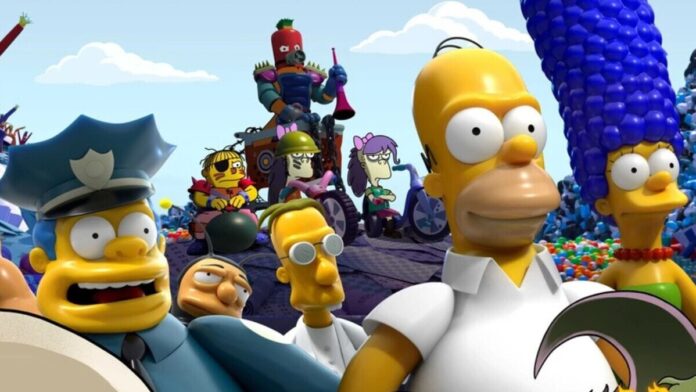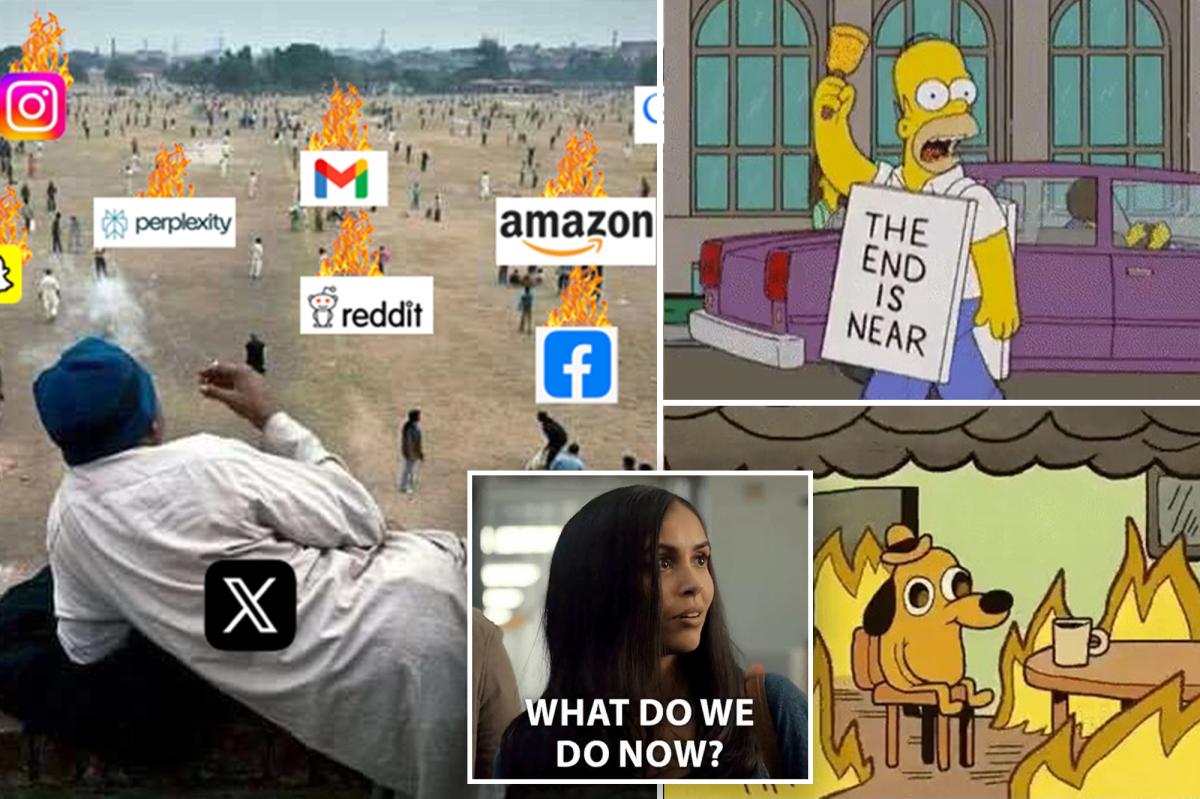Second only to tick-or-treating, The Simpsons’ annual “Treehouse of Horror” episode is a true holiday tradition, and last night’s new trio of funny scary tales didn’t disappoint. “Treehouse of Horror XXXVI” began with a parody of The Blob, where Springfield is being plagued by a giant, sentient ball of fat living in the sewers. Next up was a take on the 2024 horror film Late Night with the Devil starring everyone’s favorite alcoholic clown: Krusty. Finally, The Simpsons pulled off a visually stunning segment with “Plastic World” where Bart and Lisa live in a postapocalyptic future where all of Earth — or at least Springfield — is covered in discarded plastic.
In keeping with the high bar set by decades of “Treehouse” episodes, this year’s episode was genuinely hilarious and full of fun, format-breaking ideas, all of which I discussed with Simpsons writer Mike Price.
You wrote the middle segment, “Clown Night with the Devil.” Where did that idea come from?
Don’t Miss
It’s more than loosely based — it’s a direct rip-off — of a movie called Late Night with the Devil. I thought that movie was great, and it seemed like a natural idea if we did it with Krusty, especially as a way to revisit 1990s Krusty and set it in the past version of a show from 30 years ago, even though, with our crazy timeline, Bart is 10 years old then. Sometimes we do the classics, sometimes we do the instant classics, and I think that movie is an instant classic.
As we were figuring it out, Matt Selman, our showrunner, figured out the twist on the twist. He helped come up with this idea that Bart was the one who made the deal with the devil to keep Krusty’s show on the air and that the deal enabled all these other, much better kids shows to be killed for Krusty. We had a lot of nostalgic fun talking about all those old kids shows from the 1970s and 1980s, like Zoom, 3-2-1 Contact and The Electric Company.
Like many “Treehouse of Horror” segments, it ends with the killing of a lot of main characters. Is there a certain joy derived from killing them?
I don’t know if I’d call it “joy,” but it’s certainly fun to take the rules off for a little while. I’ve been on the show for 20-plus years, but this was my first Halloween segment. So, now that I was getting the chance to do it, I wanted it to be as Halloween-y as possible. I know in the past, some of the episodes weren’t so much having to do with Halloween or horror, so I thought, “Let’s make this a real good, gruesome Halloween story.” And, the original movie is full of gruesome effects, so it’s like, “Let’s do that.” Which is why we get a chance to see Nelson explode and Sideshow Mel have his face ripped off by an insane Mr. Teeny. It’s not joyful, but it’s fun.
What can you tell me about Michael Keaton as Krusty’s producer and Idris Elba as the Devil?
Oh, they’re both amazing. With the Devil, we wanted it to be a legitimately scary devil — we wanted to make it as big and imposing and scary as possible. We were talking about who would be a good voice to play him, and I can’t remember who it was that suggested Idris Elba, but we were like, “Oh my God, yes.”
When it came to the producer character, we were looking at the guy who plays the producer in Late Night with the Devil, and he has this 1970s look and this nervous, guy-on-cocaine energy. So we were thinking, “Who would be perfect for that?” We kept saying, “He’s a little bit like Michael Keaton in Night Shift, so we’re like, “What if we asked Michael Keaton to do it?” He came in and recorded, and he was delightful. He talked about children’s television because he grew up in Pittsburgh, and when he was a young man in his 20s, before he came out to Hollywood, he worked as a stagehand on the Mr. Rogers show. He had some stories to tell about what it was like working there and what a cool guy Mr. Rogers was.
You also worked on the other two segments in the episode, correct?
Yeah, I’m sort of called the “co-runner,” meaning that I, under Matt Selman, produced the whole thing.
Tell me about the first segment, “The Last Days of Crisco.”
One of our great writers, Jeff Westbrook, had read a story about this real-life thing that big cities, over time, sometimes amass these giant things that clog up the sewers called fatbergs. It’s literally just congealed cooking fat and baking grease that congeals up and forms this giant lock that often the cities will have to go in and clean out; otherwise it’s stopping up the sewer system. So, that became a thing like, “What if it became alive?”
We started talking about it, and Matt Selman remembered a very obscure movie from 1988. It was a remake of The Blob, and among the stars was Kevin Dillon, who later played Johnny Drama on Entourage. He played a guy working at a diner, and there’s a scene in that movie that Matt remembered seeing when he was a kid where the sink is stopped up, and when he goes to open it up with a plunger, the blob reaches out and grabs the guy by the face and yanks him in and kills him. We were like, “We’ll do that!” That’s how the fatberg comes out initially and grabs Chief Wiggum. Then we hit on the idea of it being our version of Jaws. So we set it in the 1970s, and that’s why Mayor Quimby wears the mayor’s coat from Jaws with the anchors on it.
Why did you choose Lou as the star of that one?
We wanted Wiggum to die, and we thought that Lou gets underserved and that he’s a good guy and a good cop. Wiggum is always portrayed as the idiot who doesn’t know what he’s doing, so we thought it would be fun to have Lou then be the Chief Brody of it, like a somewhat serious guy that you believe in and you want him to do well, as opposed to just being Wiggum, who’s almost always shooting his face off and things like that.
How about the final segment, “Plastic World”?
That was written by Dan Greaney, who is famous for predicting that Donald Trump would be president. That was another one where we had many other ideas we were batting around before Selman remembered that, several years ago, he had thought of this idea of basically Waterworld with plastic. What got us the most excited was the idea that we could, using technology we have now, render the plastic world in CGI with the shiny kind of plastic surface, and that everyone else, the characters who weren’t plastic, like Bart and Lisa would be still drawn in our regular style. Then, when characters like Homer and Marge show up and they’ve been turned into plastic people, they would be rendered in CG to make them look shiny and plasticy.
There’s a studio called Xentrix that our animation studio subcontracted out to. They did a really incredible job. There was so much layering, and the backgrounds are so incredible. That was a lot of work on their part, but also on our part to figure out. You can write on a piece of paper, “It’s a world full of plastic,” but what does that mean? What does it look like?
We came upon this idea that doesn’t make a whole lot of sense logically, but makes sense visually, which is that there’s whatever a thousand feet of plastic has layered up over the surface of Springfield over a thousand or two thousand years, that it’s all in these kind of striated layers. There’s a layer of blue recycling bins. There’s a layer of orange plastic Halloween pumpkins. There’s a layer of plastic rubber ducks. Naturally, it wouldn’t happen that way, but we tried it the other way, and it just looked like a giant mishmash. You couldn’t see what it was. So, we decided to go with this idea that it was all geological striations.
That ending with the plastic Maggies having taken over is great.
That came about serendipitously while we were writing. We figured out that Maggie would be the survivor at the end. It’s a happy ending in a way, in that humanity has now entered a whole new dimension, kind of like the end of 2001, where there’s the baby in space. That was the idea — that it’s not a super downer or anything. I mean, humanity dies off, but the plastic people thrive and make the world a beautiful place. We thought that Maggie being created from Homer and Marge being melted and sucked into the squishy machine was fun.
Yeah, when we were writing everything else, someone pitched the joke where they’re searching for dirt and Milhouse says, “We found dirt!” and it’s this magazine called Celebrity Dirt. Then he goes, “Voila!… Davis,” and it’s Viola Davis on the cover. That joke was already in there, and then we thought, “What if we got Viola Davis to voice Maggie?”
That was exciting, as was getting Ward Sutton from The Onion to do the opening introductory piece. I’m a huge, huge, huge fan of The Onion overall, and his fake editorial cartoons just kill me. I was really happy that we could make that work.
Disclaimer : This story is auto aggregated by a computer programme and has not been created or edited by DOWNTHENEWS. Publisher: feeds.feedburner.com









